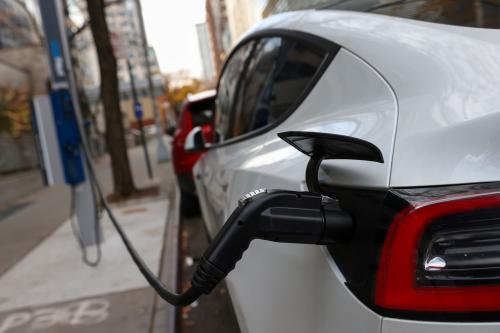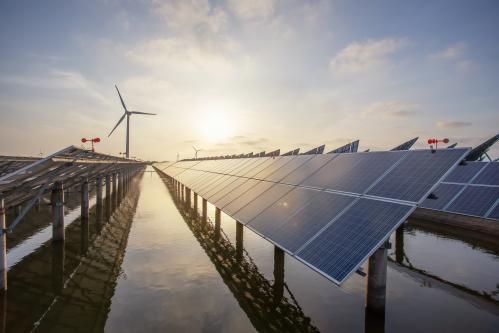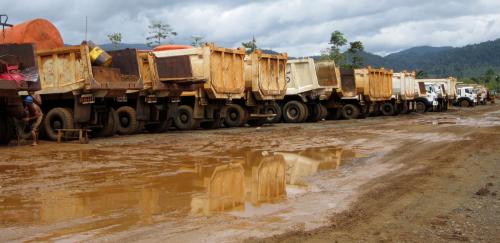On June 23, following months of mounting public pressure, Minister of Economic Affairs Henk Kamp announced that Dutch natural gas production at its massive Slochteren field will be further reduced. Last February, following a series of earthquakes and public dissatisfaction with the government’s handling of local interests, the Dutch government had already lowered the production ceiling for the first six months of 2015. Now Minister Kamp has announced that the production ceiling will be lowered further for the remainder of the year to 30 billion cubic meters (bcm) in total, contrary to the anticipated 39.4 bcm.
The decision
Effectively, the decision to cap annual production at 30 bcm means that the production vehicle NAM (shareholders being the Dutch State, ExxonMobil, and Shell) can produce another 13.5 bcm until the end of this calendar year. The national TSO has always argued that, for reasons of security of supply, a minimum volume of 33 bcm has to be produced from the Slochteren field each year. The minister can lower the volume for this year, because there is an additional 3 bcm of stored gas in a storage facility (called Norg) nearby, which has been out of commission for a part of the year. This, Kamp indicates however, is a one-time fix only.
Did the minister really have a choice? The answer is no. Public and political pressure had been mounting for quite some time, as my colleague Geert Greving and I initially reported over one year ago. At first, allocating additional financial means to the north of the country were received by some as satisfactory. However, as the frequency—and in some instances, the severity—of earthquakes increased, public dissatisfaction grew. This, combined with initial underestimation from the NAM and the central authorities of the severity of these concerns has led to a rapid erosion of public support. Hence, in February of this year, the minister had to decide to lower production from the Groningen field.
What is next?
The question is of course what the long-term policy with regard to gas production in the Netherlands will be. The minister has effectively kicked this can down the road, but will have to make a decision by the end of this year. There are essentially three options: return to previous production levels, maintain current production levels, or further reduce gas production from the Groningen field. Given the public and political sentiment, and considering that there is now fairly wide support of a causal link between the earthquakes and decades-long extraction of natural gas (including an apology from the central government for having its financial interests prevail too long over local public safety) we can safely assume that returning to previous production levels is not going to happen. It is worth noting however that this is allegedly what the other shareholders, ExxonMobil and Shell, would like to do, though this could be part of their negotiation strategy.
Maintaining current production levels is an option, and certainly in the short-term, not unlikely. It allows the government to gather additional data. To give some examples, the authorities do not currently know what an acceptable safety level is in terms of balancing Slochteren production with production from other fields and the ongoing efforts to reinforce local buildings. It is also unclear what more uneven extraction of natural gas would have in terms of seismic activity. Finally, the amount of extraction required to safeguard security of supply has to be better defined, and that probably includes, though this is not mentioned, the consideration of existing long-term contracts with foreign buyers. More time would also be required to invest in alternatives. To give an example, if domestic production would be reduced further, then additional imports are likely. Natural gas that is imported generally has a different quality, or caloric value, than natural gas from the Slochteren field (which is high caloric, and this is rare). The transmission system operator (TSO) uses nitrogen mixing stations to converge gas qualities, so that equipment and machineries are not damaged. Building additional nitrogen capacity would take time, and be a considerable investment that the public would have to bear.
That brings us to the final option, which is to further reduce natural gas production from Slochteren. If one reads the minister’s letter to Parliament on June 23, this option should not be excluded upfront. The minister has announced ongoing research to establish two central issues: first, to determine what a responsible level of gas extraction is, and second, whether the historical model of Dutch gas production—supplying Dutch demand with predominantly Dutch gas topped off with foreign gas—can be turned around. In other words, can the Dutch gas sector start supplying its clientele with foreign gas, only to be “topped off” with Groningen gas?
That decision has not been made, but it would mark a fundamental shift in the energy policy of the EU’s last major natural gas producer. If this is the line of thinking of the government, and from say 2020 onwards further downscaling of production will take place, this raises a whole range of additional questions. Consider for instance the political sentiment about gas imports. This week the government coalition partners already disagreed about the possibility of an increase in Russian gas imports (surely one possible outcome), with the liberals stating that trade with Russia will continue anyhow, whereas the social-democrats would not want to see that outcome. Also, how interesting would a fundamentally different production profile be for the other, commercial, shareholders? They tend to aim at profit maximization, and naturally shy away from politically explosive situations, surely when the returns are in decline. Could Royal Dutch Shell even consider abandoning the project given its heritage? And how does reduced gas extraction fit into a larger debate about Dutch long-term energy policy, which on June 24 received another impulse with a court’s decision that the Dutch state has been negligent for not being ambitious enough to reduce carbon emissions?
These are issues that the Dutch government has to take into consideration, and the result has to be an all-encompassing long-term energy policy that safeguards people’s safety, and also generates sufficient investments in new capacity. In the current constellation, carbon emissions rise, investments in cleaner solutions are lagging, and we quarrel about the origins of natural gas, even though in a liquid market like that of Northwestern Europe that seems irrelevant. It is time for the Dutch to make some tough choices. The Dutch Court has made the first move.



Commentary
Further reduction of Dutch natural gas production: The end of an era?
June 26, 2015